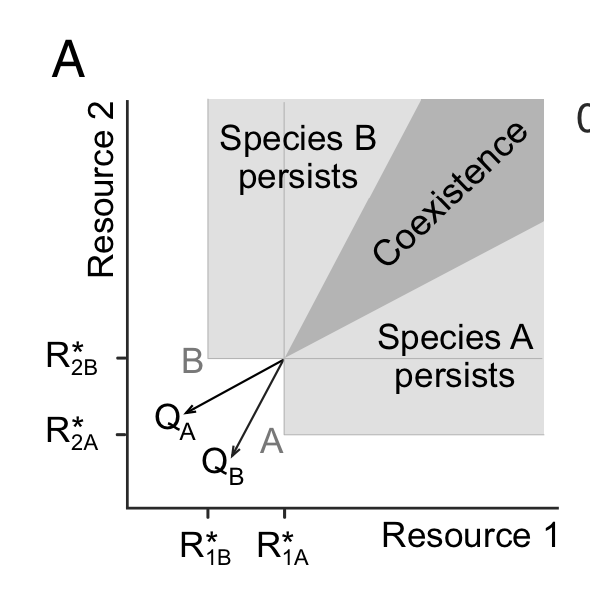There are several popular approaches to the goal of finding generalities in ecology. One is essentially top down, searching for generalities across ecological patterns in multiple places and at multiple scales and then attempting to understand the underlying mechanisms (e.g. metabolic scaling theory and allometric approaches). Alternatively, the approach can be bottom up. It may consider multiple models or multiple individual mechanisms and find generalities in the patterns or relationships they predict.
A great example of generalities from multiple models is in a recent paper published in PNAS (from Sakavara et al. 2018). It relies on, links together, and adds to, our understanding of community assembly and the effects of competition on the distribution of niches in communities. In particular, it adds additional support to the assertion that both combinations of either highly similar or highly divergent species can coexist, across a wide variety of models.
Work published in 2006 by Scheffer and van Nes played an important early role towards a reconciliation of neutral theory and niche-based approaches. They used a Lotka-Volterra model to highlight that communities could assemble with clusters of coexisting, similar species evenly spaced along a niche axis (Figure 1). Neutrality, or at least near-neutrality, could result even when dynamics were determined by niche differences. [Scheffer, van Nes, and Remi Vergnon also provide a nice commentary on the Sakavara et al. paper found here].
 |
| Fig. 1: From Scheffer and van Nes, emergent 'lumpiness' in communities. |
 |
| Fig 2. From Sakavara et al. (2017). |
What they found is strikingly similar to the results from Scheffer and van Nes and dissimilar to the the results that emerge when resources are constant. Clumps of coexisting species emerged along the trait axis. When resource fluctuations occurred rapidly, only fairly specialized species survived in these clumps (R* values that were high for either resource 1, or resource 2, rather than intermediate). But when fluctuations were less frequent, clusters of species also survived at intermediate points along the trait axis. However, in all cases the community organized into clumps composed of very similar species that were coexisting (see Figure 3). It appears that this occurs because the fluctuating resources result in the system having non-stationary conditions. That is, similar sets of species can coexist because the system varies between those species' requirements for persistence and growth.
 |
| Fig. 3. "Lumpy species coexistence". The y-axis shows the trait value (here, the R*) of species present under 360 day periodicity of resource supply. |
Using many of the dominant models of competition in ecology, it is clearly possible to explain the coexistence of both similar or dissimilar species. This is true across approaches from the Lotka-Volterra results of Scheffer and van Nes, to Tilman's R* resource competition, to Chessonian coexistence (2000). It provides a unifying expectation upon which further research can build. Perhaps the paradox of the planktons is not really a paradox anymore?

No comments:
Post a Comment